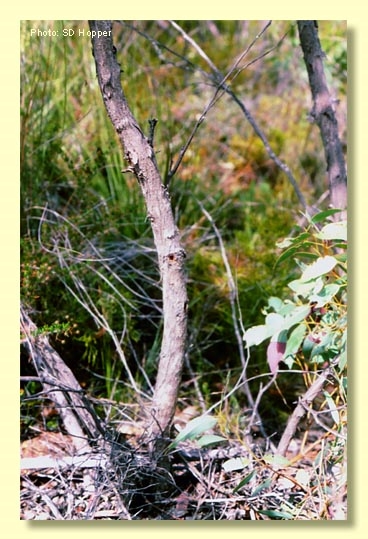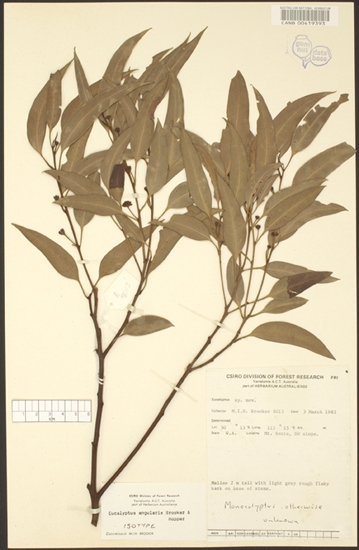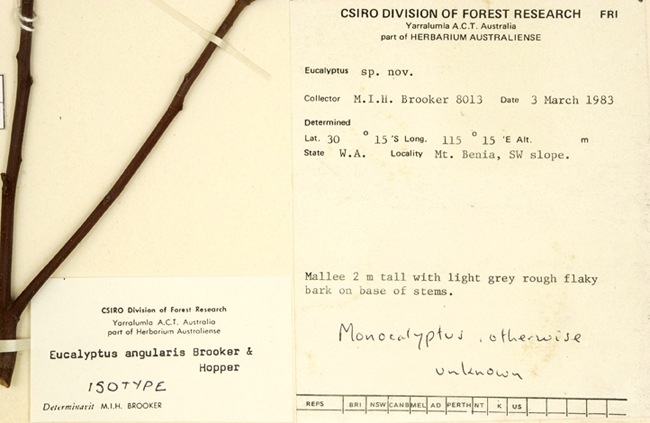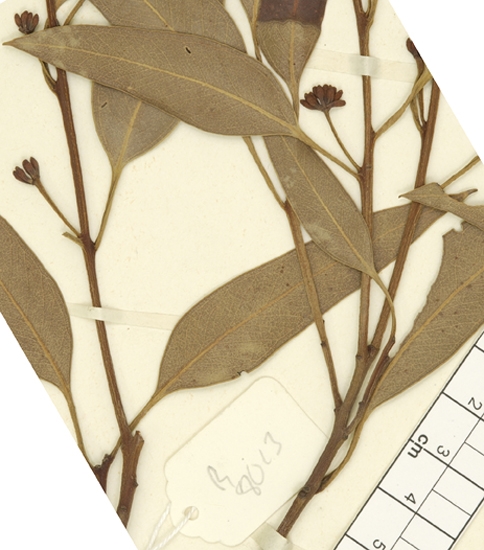Euclid - Online edition
Eucalyptus angularis
Eucalyptus | Eucalyptus | Longistylus | Frutices | Angulares
Bark rough for basal ca 1m of stem, grey, smooth above.
Branchlets angular; lacking oil glands in the pith.
Juvenile growth (coppice or field seedlings to 50 cm): not seen.
Adult leaves alternate, petioles 1–1.8 cm long; blade lanceolate to falcate, 5.5–10 cm long, 1.5–1.7 cm wide, base tapering to petiole, margin entire, apex pointed, concolorous, glossy, green, side-veins greater than 45° to midrib, reticulation, intramarginal vein remote from margin, oil glands island and intersectional.
Inflorescence axillary unbranched, peduncles 1–1.2 cm long, buds ?9 or 11 per umbel, pedicellate. Mature buds not seen, immature buds ovoid, scar absent, the single operculum conical, stamens irregularly flexed, anthers ± reniform, versatile, dorsifixed, dehiscing by longitudinal slits that are ?not confluent apically, style long and straight, stigma tapered, locules 3, the placentae each with 2 vertical rows of ovules; flowers not seen.
Fruit not seen.
Seeds not seen.
Cultivated seedlings (measured at ca node 10): not grown.
Flowering time unknown.
A mallee endemic to Western Australia and of extreme rarity, known only from a small stand near Mt Lesueur and one on Mt Benia. The stems are rough-barked to 1 m and the adult leaves short, glossy green, glandular and slightly discoloured, reminiscent of the eastern stringybarks. The plant has axillary inflorescences with up to 11 flowers per umbel but has not been seen in flower.
Eucalyptus angularis belongs in Eucalyptus subgenus Eucalyptus, a group characterised by buds with a single operculum (hence no operculum scar) and ovules arranged in two rows on the placenta. Little is known of this species and its relationships within the subgenus.
Searches by two of the authors (AVS and JRC) in 2002 were unable to relocate the plants. Nicolle (2019) asserts that this species is a hybrid, viz. = E. exilis × E. marginata subsp. marginata.












